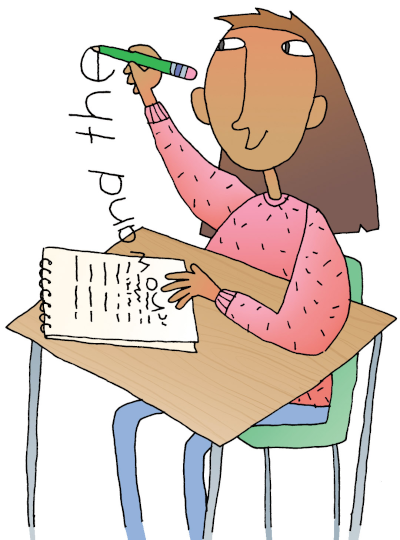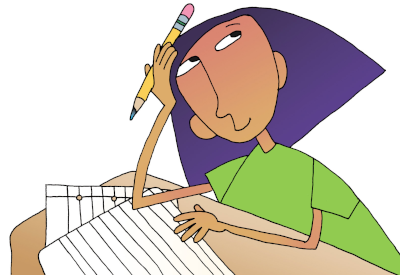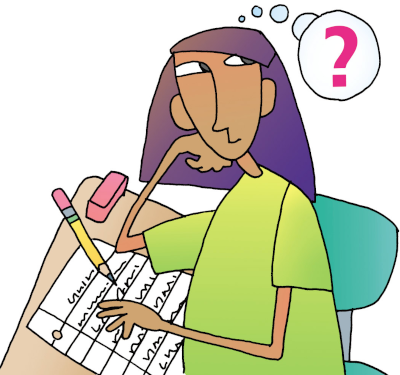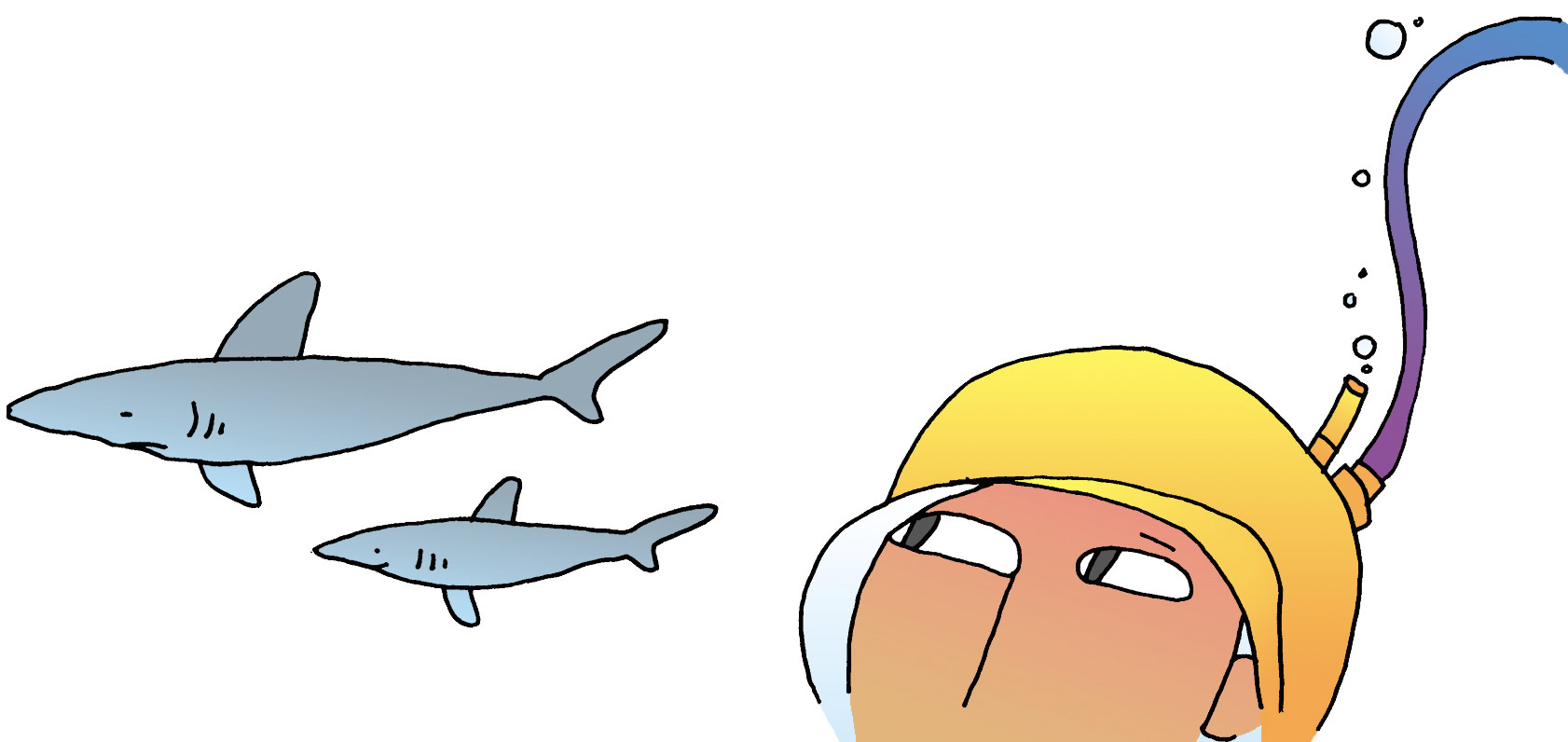Page 51
Writing and Revising

If you have focused your ideas and gathered details, your head will be swimming with thoughts. Writing a first draft lets you pour all those thoughts into words on the page. They don’t have to be perfect just yet. They just have to be written so that you can work with them.
After you have a first draft, you can make improvements. That’s called revising. You want to strengthen weak parts and make strong parts even better. A classmate can help you find things to improve.
This chapter provides tips for writing a first draft as well as helpful strategies for revising it.
What’s Ahead
WE 052
Page 52
Writing a First Draft
You’re ready to write a first draft if you have selected an interesting topic, learned a lot about it, and decided on a focus. These tips will help.

- Write while your prewriting is fresh in your mind.
- Use your planning as a basic guide.
- Write as freely as you can, getting as much down as possible.
- Include a beginning, a middle, and an ending.
- Sound like you care about your topic.
Understanding the Three Parts
Remember that a complete first draft includes a beginning, a middle, and an ending. Here is a quick guide to these three parts. (See pages 22–23.)
Beginning
In a Paragraph 🟪 A paragraph usually begins with the topic sentence. This sentence names the topic and focus of the paragraph. (The focus tells what you plan to say about the topic.)
Serena Williams not only dominated tennis for 20 years (topic) but also opened the sport to a new generation (focus).
In an Essay 🟪 An essay should start with sentences that identify the topic and hook the reader, leading to the focus statement.
Provide an interesting fact or quotation about the topic.
Ask the reader a question.
Share a brief story about the topic.
Provide your focus statement.
Tennis legend Roger Federer called her the greatest tennis player of all time. John McEnroe said she was the “GOAT of GOATs.” The Women’s Tennis Association ranked her Number 1 for 319 weeks. Who? Why Serena Williams, of course. She not only dominated tennis for 20 years but also opened the sport to a new generation.
WE 053
Page 53
Middle
In a Paragraph 🟪 The middle sentences in a paragraph support the topic sentence with facts, examples, explanations, and so on.
In an Essay 🟪 The middle paragraphs in an essay support the focus statement with different types of details. The number of middle paragraphs depends on the number of main ideas you have to support the focus.
Serena started her professional career in 1995. In seven years, she rose to Number 1, winning the French Open, the U.S. Open, Wimbledon, and the Australian Open—defeating her older sister, Venus. Her career Grand Slam came to be known as the “Serena Slam.”
Injuries in the next few years slowed Serena down. She lost some of her powerful form, and people started wondering if she was fading. Serena fought back from injuries and regained her form.
By 2012 at Wimbledon, she dominated again. She went on to achieve a second “Serena Slam.” She has won four Olympic gold medals, three of them with her older sister. She ruled tennis for most of 20 years.
Ending
In a Paragraph 🟪 The closing sentence restates the topic sentence.
Serena’s most powerful gift to tennis is the example she has set.
In an Essay 🟪 The ending paragraph brings an essay to an effective close. The ending paragraph in an essay should do at least two of these things.
Revisit the focus.
Summarize main ideas.
Emphasize a point.
Give a final thought.
Serena Williams opened the sport of tennis to people from all backgrounds. She inspired a whole new generation. Her serve is powerful, her style of play changed the sport, and her record of wins is incredible. But Serena’s most powerful gift to tennis is the example she has set.
WE 054
Page 54

Revising the Writing
Revising is the step when you change and improve the first draft. Revising includes changes like these:
- adding details
- reordering sentences or paragraphs
- taking out information you do not need
- rewriting parts that are not clear
- adding graphics or illustrations
Take a Break 🟪 This step is easy! Put your first draft in a folder for a while. Later, when you read it again, changes will occur to you that you didn’t think of before.
Read and Share 🟪 Read your first draft aloud to yourself. Then read it to one of your classmates. Jot down any ideas or questions that come up during this sharing session. (Use the response sheet on page 60.)
Look for the Strong Parts 🟪 Always find one or two things you like in your draft. You may like a portion of dialogue or a certain descriptive sentence. Put a star next to these parts.
Look for the Weak Parts 🟪 Also look for parts that need work. Important details may be missing, or your sentences may sound confusing. Or maybe too many of your sentences are the same length or start with the same word.
Tip Use a revising checklist. (See the next page.) A checklist will remind you of the many possible ways you can revise and improve your writing.
WE 055
Page 55
Revising Checklist
Use this checklist each time you revise your writing. You can use it by yourself or with a classmate.
Does the writing follow an effective plan?
_____ Does the writing follow my list, outline, or graphic organizer?
_____ Do I remember my audience?
_____ Does the writing have a clear purpose (to explain, to describe, to persuade, to tell a story)?
_____ Does the writing connect to the audience?
Is all the important information included?
_____ Does the topic sentence or thesis statement name the focus?
_____ Do details help the reader understand the ideas or story?
_____ Does the writing answer the reader’s main questions?
Is the writing focused?
_____ Does the writing remain focused from start to finish?
_____ Does the writing avoid repetition?
_____ Does the writing avoid information not related to the subject?
Do all parts work well?
_____ Does the beginning get the reader’s attention?
_____ Are all ideas clearly worded?
_____ Does the writing show, not just tell? (See page 56.)
_____ Does the ending give the reader something to think about?
Do all parts appear in the best order?
_____ Do the most important points stand out?
_____ Do details appear in the best possible order?
WE 056
Page 56
Making Your Writing Stronger
1. Show, don’t tell. 🟪 When you are able to make readers feel, hear, smell, taste, or see things through your writing, you are “showing” rather than “telling.” In Charlotte’s Web, author E. B. White describes the barn where Wilbur the pig and his spider friend, Charlotte, live. White uses showing details to place his readers right there with Charlotte and Wilbur:
It smelled of hay and it smelled of manure. It smelled of the perspiration of tired horses and the wonderful sweet breath of patient cows. . . . And whenever the cat was given a fish head to eat, the barn would smell of fish.
If the author had decided to tell, not show, his description might have sounded more like this:
The barn was full of interesting smells of many kinds. The smells came from all the animals and other things in the barn.
2. Connect your ideas. 🟪 Remember to use transitions to help readers follow the organization of your paragraphs and essays. (See pages 24–26 and 95.) See how the transitions make the passage below easier to follow. Each transition introduces a step in the process.
Wrapping a present is easy. First, put it in a box and place the box facedown on the back side of a piece of wrapping paper. Next, judge how much paper you will need. The paper has to cover all sides of the box. Cut the paper to the right size. Then wrap the paper once around the box. Tape it. Finally, fold the loose corners in, and fold the flaps of paper to cover the sides. Tape them. It’s a present!
Tip Be careful not to use too many transitions. Use just enough to tie things together and help the reader navigate your writing.
WE 057
Page 57
3. Start Strong 🟪 The beginning should get your reader’s attention and give a hint about what’s coming.
Each year there are only about 80 shark attacks worldwide, and only about five people die. Other animals are much more dangerous to humans. Sharks do not deserve their vicious reputations. . . .
4. Elaborate Your Ideas 🟪 All of the ideas in the middle (body) should support or explain your subject. Use details that answer a reader’s questions.
Which shark species are dangerous?
What is the biggest shark, and what does it eat?
Do sharks have any natural predators?
5. End Well 🟪 Don’t just end your paragraph or essay. Instead, leave your reader with an interesting thought or question to think about.
Sharks aren’t really a big threat to human beings. Dogs hurt many more people. And the most dangerous animal of all is one of the smallest: the mosquito!
6. Add a Snappy Title 🟪 A good title makes your reader curious about your subject. Compare these titles and ask yourself, “Which one grabs my attention?”
Some Shark Info or Busting Shark Myths
Water Problems or Get the Lead Out (of Pipes)
Movies That Fail or I’m a Fan of Flops!

WE 058
Page 58
Revising with Partners
It’s important to give your classmates and family members a chance to react to your writing. They can help you decide what parts need to be revised. Writing partners can also help you find answers to questions like these:
- Have I included enough information?
- Will readers be able to follow my ideas?
- Will they have any questions?
- Does my writing hold their interest?
What Partners Do
A revising partner’s main job is (1) to read or listen carefully, (2) to offer encouragement, and (3) to give advice. The person’s responses may please you or surprise you. Either way, a partner can help you turn your first draft into a strong piece of writing. Helpful partners . . .
- identify parts that they feel are strong,
- ask questions about unclear parts, and
- give honest answers to the writer’s questions.
How to Help One Another
Partners can help throughout the writing process, but their advice is really important during revising. Partners should not correct the paper for you. Instead, they should offer advice. It is up to you, the writer, to decide what changes to make and how to make them.
Writing partners can also help you when you are ready to edit your writing. They may catch punctuation or grammar errors that you miss.
Tip Conference partners should praise a classmate when they like something in a piece of writing, but they should really mean it. Writing conferences should not be popularity contests.
WE 059
Page 59
How to Share Your Writing
During sharing time, classmates take turns reading their drafts aloud. Partners listen, and sometimes they take notes or use response sheets. (See page 60.)
Tips for the Writer
- Come prepared with a draft you want to revise.
- Tell your partner about your interest in the writing.
- Practice reading your draft out loud so that you can read it smoothly.
- Speak slowly and clearly. Don’t rush.
- Ask questions like “Does my beginning get your attention?” “Does this title fit my story?”
- Listen to your partner’s comments and suggestions. Don’t take them personally. Your partner is just trying to help.
Tips for the Partner
- Listen carefully.
- Point out what you like about the writing.
- Ask about anything you do not understand, such as a word you don’t know or a sentence that seems out of place.
- Be kind and polite. (Sharing makes some people nervous.)
- Make suggestions in a helpful way. Don’t say, “Your writing is missing a lot of stuff.” Do say, “I want to know more about that scary bear.”
Tip Compliments are great. However, specific compliments work best. “Good job, Scott!” makes Scott feel good. But it’s more helpful to say, “That description of your dog Charlie bumping into the post was really cool!”
WE 060
Page 60
Sample Response Sheet
A partner can fill out a response sheet like this one in order to help a writer revise.